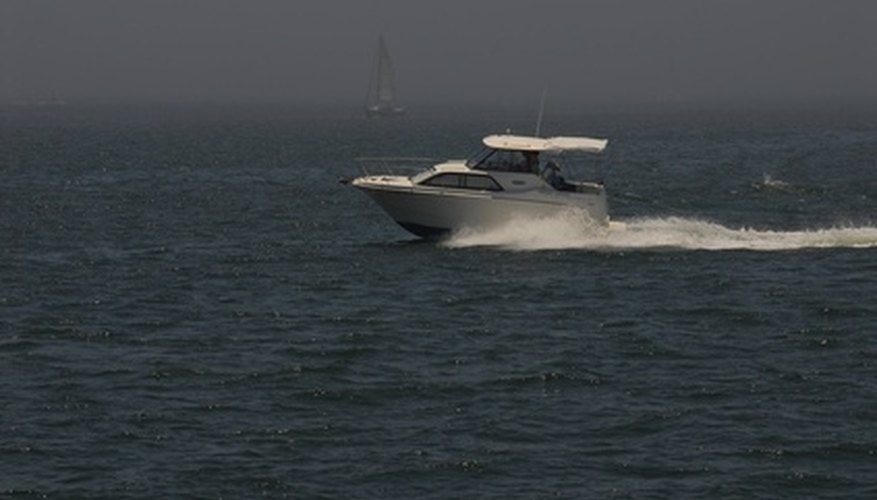
Your Mercruiser engine requires proper care and maintenance. Winter temperatures can easily crack an engine block and increase the chance of rust and corrosion. Winterization maintenance will prevent costly damage to your engine and stern drive. If water is detected in any of the lubrication systems, you must correct the cause of the problem. You can purchase the necessary supplies from any boating retailer and winterize your boat yourself with a few specialty tools and common garage tools.
Items you will need
Mercruiser service manual
Mercruiser engine flush tool
Sheet of plastic
Electrical tape
Engine fogging oil
Open-end wrench set
Socket set
Large flat screwdriver
Stern drive oil pump
Stern drive lubricant
Pour fuel stabilizer into the gas tank and fill it with fresh fuel. This will reduce condensation inside the tank. Remove the drain plug at the rear of the boat and allow any water to drain out.
Open the engine compartment. Check the water hoses and replace them if they are cracked or soft. Connect the engine flush unit to a garden hose and position it over the water intake slots on the stern drive just above the propeller. Turn on the water to the hose. Remove the nut over the spark arrestor with a box wrench and remove the unit from the carburetor. Turn on the switch to the blower on the dash to remove any gasoline vapors. Start the motor and run it for a few minutes. Turn off the fuel supply and spray the fogging oil directly into the carburetor until the engine stalls. Shut down the engine, turn off the water supply and remove the flush unit. Replace the spark arrestor and wrap it with plastic. Use electrical tape to secure the plastic around the base of the arrestor.
Remove the spark plugs with a socket wrench and spray about a tablespoon of fogging oil into each cylinder. Replace the spark plugs and crank the engine a few times with the starter to lube the cylinder walls.
Locate the drain plugs referred to in the owners manual. Open the petcocks with an open-end wrench and allow all of the water to drain out of the engine block.
Remove one end of the water hoses with a flat screwdriver and pour some RV antifreeze into each of them. Replace the hoses. This will prevent any water trapped in the hoses from freezing.
Remove the oil dipstick and check the oil cleanliness and level. Add or change the oil as necessary.
Lower the stern drive. Place a flat container under the unit to capture the stern drive lubricant. You should check and change the stern drive oil each season. If water has entered the stern drive and is allowed to sit all winter, the drive will be severely damaged. Remove the top vent screw with a large flat screwdriver. Remove the lower drain screw and allow the lubricant to drain into the container. Screw the stern drive pump onto the new container of lubricant and place the end of the pump hose in the lower drain screw. Pump the fluid into the stern drive cavity until you notice lubricant exiting out the vent screw. Replace the vent screw while holding the lubricant tube in place. Remove the hose and attach the drain screw. Leave the stern drive in the lower position throughout the winter to allow proper lubrication of the gears.
Remove the propeller with an open end or adjustable wrench and lube the splines with bearing grease. Replace the propeller.
Disconnect the battery and charge it. Periodically check it throughout the winter.
Warnings
- If you are not comfortable performing these tasks, contact a boat repair shop and have a trained mechanic perform the service for you.
References
Warnings
- If you are not comfortable performing these tasks, contact a boat repair shop and have a trained mechanic perform the service for you.


